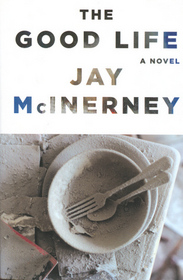Awesome book by the author of "Bright Lights Big City", which chonicles the aftermath of 9/11 for some affluent New Yorkers.
Search -
The Good Life
The Good Life
Author:
From Publishers Weekly — The Good Life is about a group of privileged New Yorkers who are led to reassess their lives -and become in many ways better people- in the wake of the 9/11 attacks. The plot premise seems so pat and topical that the reader is likely to take fright. But there is mercifully no need. It is a tribute to McInerney's many tale... more »
Author:
From Publishers Weekly — The Good Life is about a group of privileged New Yorkers who are led to reassess their lives -and become in many ways better people- in the wake of the 9/11 attacks. The plot premise seems so pat and topical that the reader is likely to take fright. But there is mercifully no need. It is a tribute to McInerney's many tale... more »
ISBN-13: 9780739471944
ISBN-10: 0739471945
Publication Date: 2006
Pages: 368
Rating: 1
ISBN-10: 0739471945
Publication Date: 2006
Pages: 368
Rating: 1
5 stars, based on 1 rating
Publisher: Alfred A. Knopf
Book Type: Paperback
Other Versions: Hardcover, Audio Cassette, Audio CD
Members Wishing: 0
Reviews: Member | Amazon | Write a Review
Book Type: Paperback
Other Versions: Hardcover, Audio Cassette, Audio CD
Members Wishing: 0
Reviews: Member | Amazon | Write a Review
Please Log in to Rate these Book Reviews
Genres:




